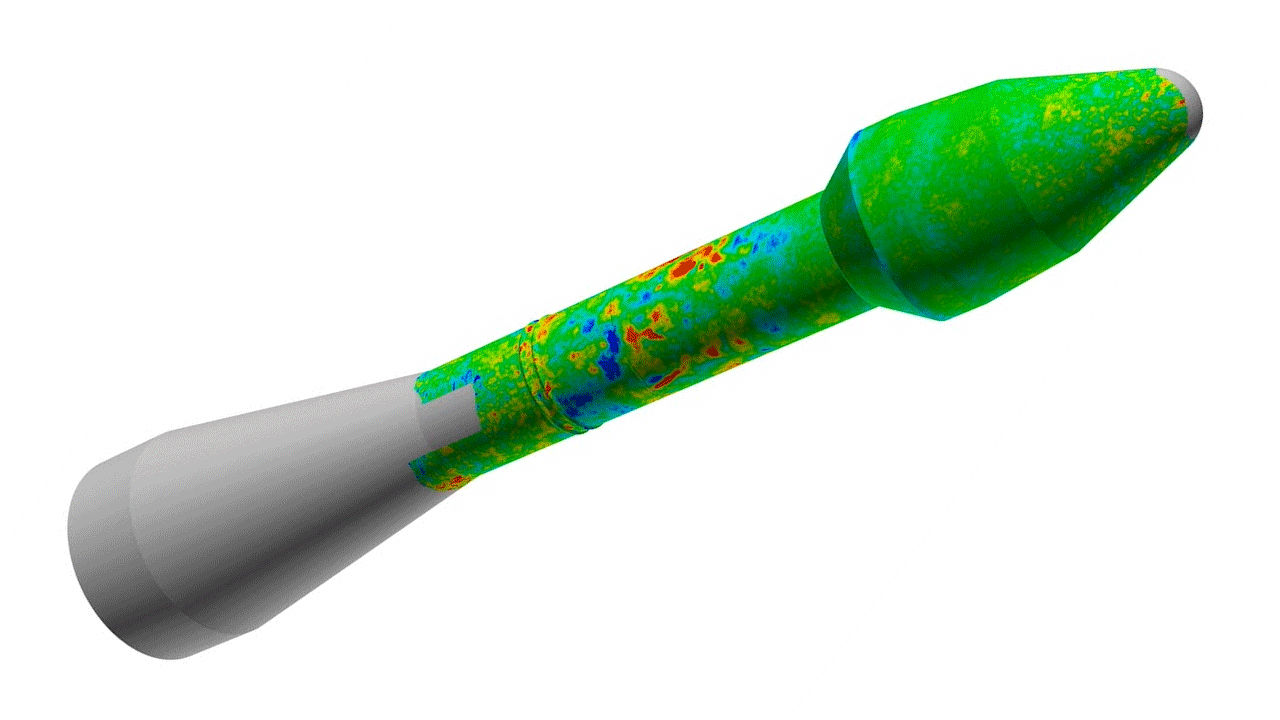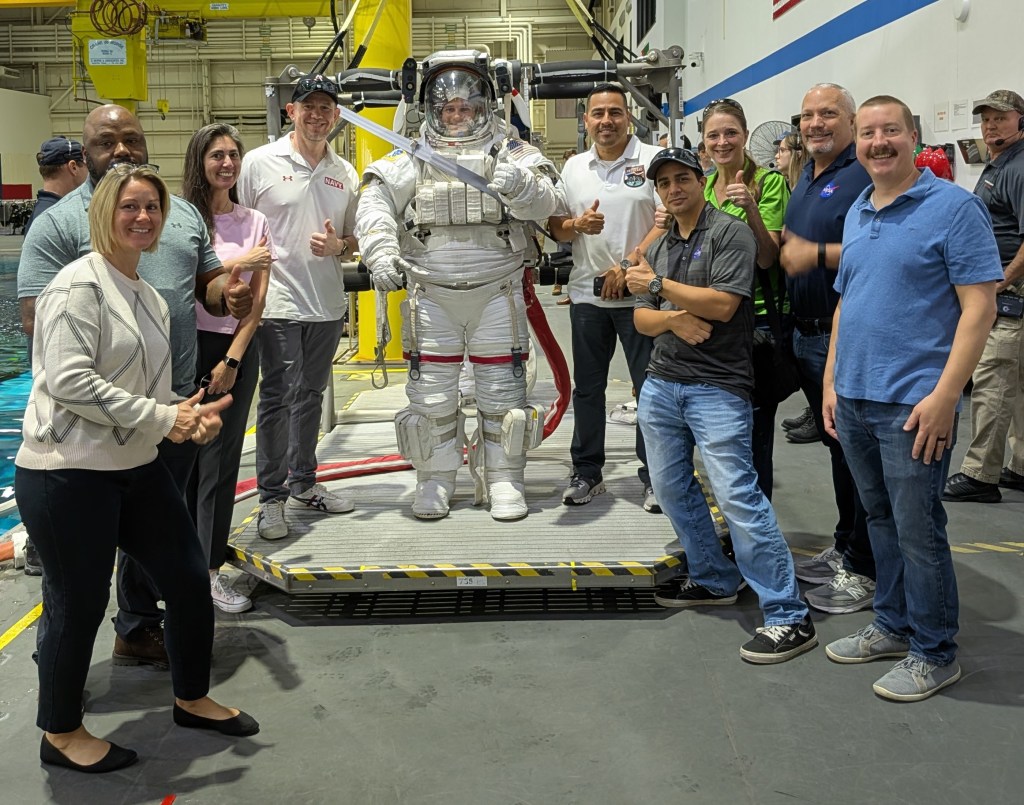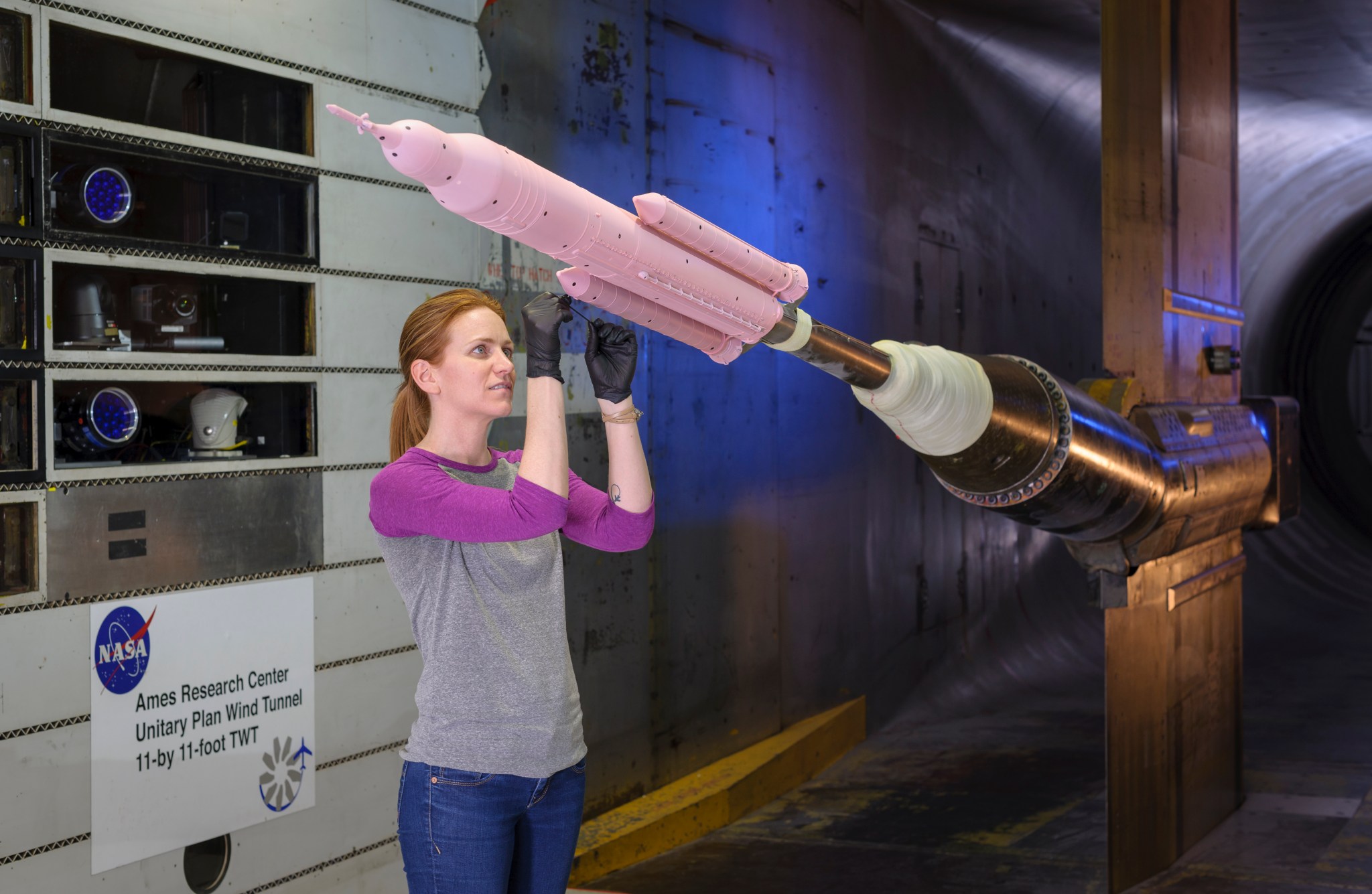As it thunders upward through the Earth’s atmosphere to carry a spacecraft into orbit, a rocket is buffeted by a chaotic flow of air. At high speeds, airplanes experience a similar, unsteady flow of air over their wings. This creates considerable pressure forces that change rapidly in strength and direction, especially at or near the speed of sound.
Aerospace researchers at NASA’s Ames Research Center in California’s Silicon Valley are refining a state-of-the-art method to precisely measure these fluctuating forces. The secret to their technique lies in a new breed of pressure-sensitive paint (PSP), called Unsteady PSP, which emits a bright crimson glow in the presence of high-pressure airflow.
During a simulated flight through the planet’s atmosphere in the powerful airflow of a wind tunnel, this technology lets researchers capture measurements fast enough to keep up with rapidly changing pressure loads over the entire surface of the vehicle model. Obtaining such accurate data is the first step in understanding how a vehicle’s structure will respond to buffet in flight and in minimizing the impacts through design.
Pink Paint for the Red Planet
The Space Launch System (SLS) will be the workhorse rocket for NASA’s Journey to Mars. The second generation of SLS will have a 105-metric-ton lift capacity and carry NASA’s Orion spacecraft with crew plus cargo. Initial testing suggested the buffet loads that would affect the rocket during flight could be sufficient to require redesign of critical structural components.
“To help verify the buffet estimates, we had to measure this unsteady air flow more accurately,” said Jim Ross, an aerospace engineer in the Experimental Aero-Physics Branch at Ames.
The traditional method for approximating fluctuating pressure loads on aircraft involves many small microphones – up to 400 – installed on the surface of a scale model to be studied in a wind tunnel. This can be complex and costly, and only affords partial coverage.
When the original pressure-sensitive paint came along, the coverage it offered was a huge improvement. However, since it was designed to measure steady pressure, the data it provided represented averages over time, as opposed to truly capturing the fluctuating pressure itself. So, Ross and his NASA Ames colleague, Jayanta Panda, asked themselves how they could pin down the real numbers on these ever-changing pressure loads.
A New Formula for Painting Pressure Pictures

PSP works by reacting with oxygen to produce light. Differences in pressure result in variations in the amount of oxygen interacting with the painted surface, and, therefore, in the intensity of the light emitted. Cameras around the wind tunnel record images, which researchers combine to determine the pressure everywhere on the model.
The new Unsteady PSP works the same way as standard PSP and even looks the same when sprayed on in a layer as thin as 10 millionths of an inch. However, it’s full of tiny pores that let the air flowing over the model come into contact with a greater surface area of the paint. This allows oxygen to react more quickly with the paint, yielding more accurate data on the fluctuating pressures affecting planes and rockets during flight.
With this PSP designed specifically for fast pressure changes, Ross and Panda had found their tool of choice for advancing the study of buffet. In a groundbreaking test at NASA Ames, in November 2015, they achieved their goal of measuring rapidly changing forces along the body of a rocket.
In one year, the team moved from proof of concept to developing the basis of a system to be used with rocket and aircraft customers, like the SLS team, private industry, or the military. The next step for the team of researchers at Ames will be to install another camera in the wind tunnel to optimize an upcoming round of SLS buffet testing, expected later this year. Thanks to a new generation of high-tech paint, future spacecraft and aircraft will be built to withstand all the pressure that we, and the atmosphere, may put on them.
——————————-
Last Updated: Aug 6, 2017
Editor: Abigail Tabor

























